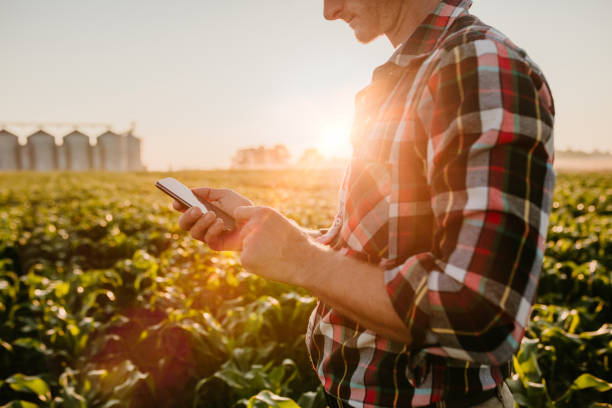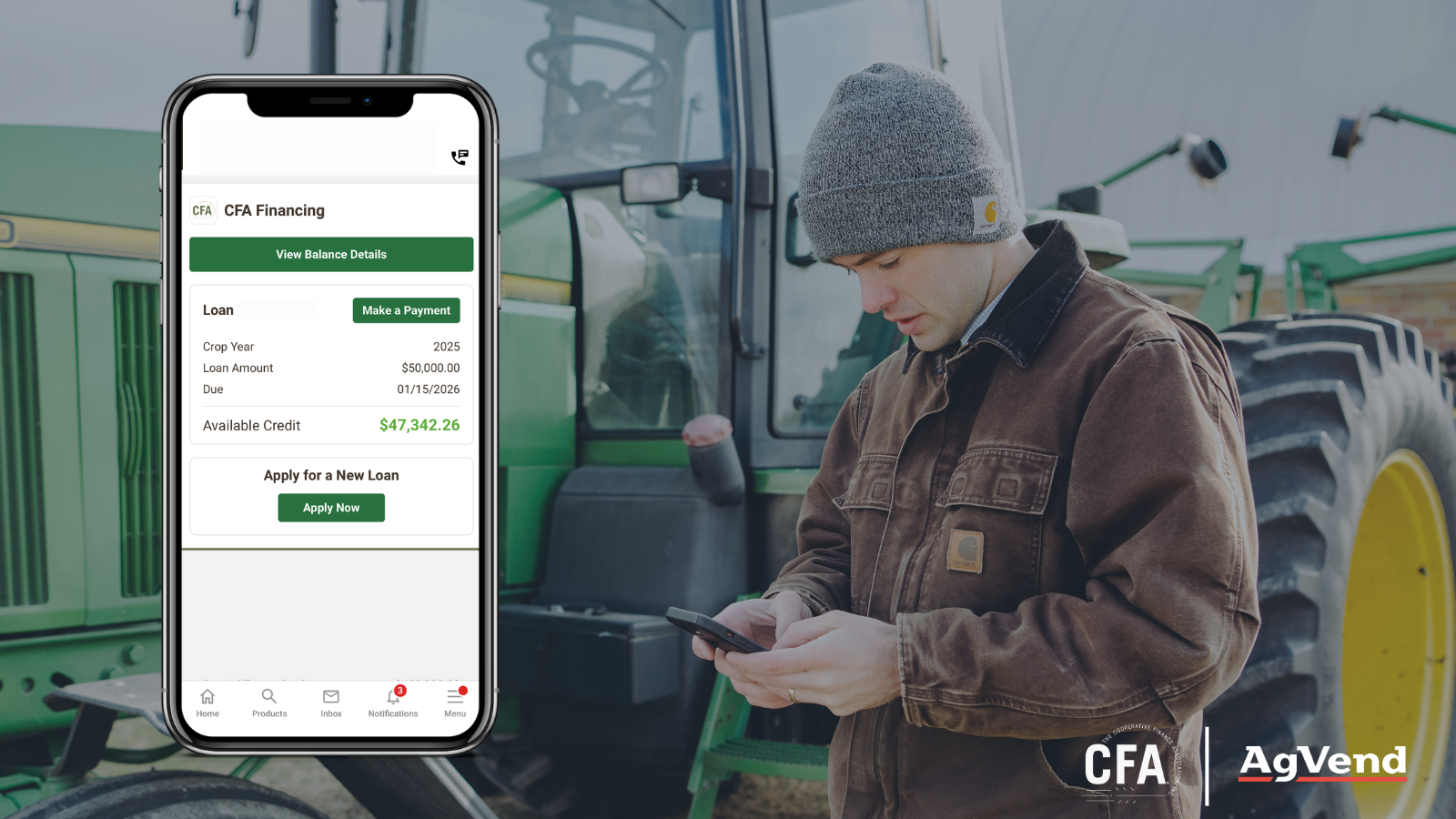
- March 27, 2021
The Opportunity of a Digitally Enabled Ag Retailer
This article was originally published on CropLife.
Change is certainly nothing new in agriculture. Neither is technology. From the introduction of fertilizer to hybrid seeds to precision farming, technology has allowed growers to steadily produce more from each acre for decades.
What is new, however, is the rate of change. From generational transitions to technological advancements, there’s little doubt that farming will look very different 10 years from now.
Ag retailers are in a unique position to help growers navigate these rapid changes. With established relationships built on trust, producers regularly rely on retailers for their advice and expertise. This is especially true for factors such as crop production and grain marketing.
But growers are frequently looking for more from their retail partners. A study by McKinsey points out that, “While farmers typically use a combination of digital and physical channels in the course of their buying journeys, an inability to access the right expertise at the right time and limited mobile functionality have left many farmers dissatisfied.”
The study goes on to say, “…established companies have significant advantages, including long-standing relationships and deep knowledge of the farming industry. With competition likely to intensify, they need to play to those strengths as they create the integrated omnichannel environment that farmers want.”
Basically, growers are like anyone else. They are part of the digital economy in their personal lives, utilizing smartphones, social platforms, eCommerce sites, and online banking. They use digital tools to make their lives easier, and increasingly they look to digital outlets for their farming business as well.
By embracing digital technology, ag retailers have an opportunity to grow their business by enhancing relationships with their grower customers. They’ll continue to be the trusted advisor, while providing new ways for producers to do business where, when and how they prefer.
What Digital Is – and Isn’t – for Ag Retailers and Growers
Adding a digital component to a retail business can be perceived as a threat, so it’s important to understand and communicate that digital is not a replacement for a relationship with the grower. Instead, it is an enhancement that helps professionals do more of what they love to do and less administrative work that eats up time.
We see it with our current retailer partners who have been able to strengthen relationships and spend more time in the field.
For example, an Agronomy Account Manager at River Valley Cooperative said the implementation of a mobile app allows him to spend more time with family and still get back to growers about 8 to 10 hours faster than before. This is in large part because he doesn’t have access to reliable broadband at his home. With the time saved, he can focus on high-value touchpoints, like discussing a prescriptive nutrient plan with a customer, rather than spending the first three hours of the morning stuck in the office catching up with emails and paperwork.
Another retail partner found that when they moved the process of quoting to digital, it allowed them to convert bookings 50% faster. Once the process is digital, consider how the grower can review the quote on a phone or computer, make or accept changes, click “order,” and it’s done.
This example is not exclusive to agriculture – it’s apparent in other industries as well. Companies doing best in other business categories tend to be those that excel at digital transformation and engagement.
Many of these companies are well-established brands – not a new disrupter in the category. McDonald’s and Domino’s Pizza have led the way with digital and transformed their businesses with digital tools such as mobile apps that facilitate omnichannel transactions. Walmart and Tractor Supply are shining examples as well, thriving while many other retailers shutter locations.
A digitally enabled retailer offers a number of benefits for growers, by allowing them to do business 24/7, where, when, and how they want. Our retail partners find that digital has allowed them to strengthen customer relationships, and they cited a few examples:
-
Improved communication. Many growers prefer a text for routine communications. Retailers can automate texts and notifications, so growers know immediately when something is available through the app on their phones.
-
Improve education. With easy access to product information through a built-in marketing package, retailers help their growers get valuable information faster.
-
Better demonstrate agronomic opportunities. Retailers can quickly respond to real-time situations in the field and immediately connect with growers through the mobile app to make them aware of what they are seeing and what growers can do to preserve yield.
Digital also addresses today’s challenges within retail operations.
-
Labor constraints. Automate where you can, such as routine notifications and paperwork, to take those administrative duties off the plates of your professionals.
-
Engage these new segments without alienating the old. Some of your growers won’t have an interest in fully utilizing digital tools, but many younger growers expect them. Within your business, however, digital tools allow you to better address both groups with how they want to be served.
-
Large incumbents are investing in digital platforms. They see the efficiency gains that can be had, so they are spending millions of dollars to build their own portals.
The Opportunity: How To Do It
To pave the way for business success, it’s critical that retailers uncover areas where digital adds real value and then optimistically communicate those facts. Different people find value in different places, but we’ve identified a few common themes that apply across retailers.
Help growers embrace new technologies (precision to genetics). It can be a challenge to work closely with growers to educate them about new agronomic offerings. Digital tools can help you cut out low value touch points and replace them with high value ones.
What do we mean by this? Basically, use digital tools for routine notifications and other communications that don’t require personal interaction. This, in turn, frees up time for the retailer and grower to talk in person about topics that truly require one-on-one discussions.
KC Graner, VP of agronomy at CFS in Truman, MN, says having a digital partner has given them the ability to meet growers on their terms. “When an agronomist meets with a grower, it’s to talk about things that can really make a difference in their operation.”
Growers also should be encouraged to bring their questions about any process directly to the retailer.
Streamline processes to generate value from farm data and practices. Traceability and carbon markets provide promise for creating more value on the farm. But processes need to be in place to make this a reality, from reporting to managing payments.
Data is critical in these processes, but retailers and growers need to move from simply aggregating data to using it to generate insights. Growers want to farm, not sit at a computer and mess with data. As a result, retailers will be integral in helping growers turn their data into dollars.
By utilizing digital processes, they can help growers set up a reporting system for these markets and manage payments on the backend. By managing data from a single digital location, the grower and retailer can work together to capture available dollars for the farming operation.
Keep continuity as farm ownership/leadership changes hands. We’re in a time of generational change. As the Baby Boom generation retires, it’s meant new players are stepping up to lead on the farm and at the retailer. Sometimes, it’s simply a new face pulling the strings, while other times an entirely new business steps in through a merger or acquisition.
To ensure the transfer of knowledge, digital processes can be employed to put key information at the fingertips of growers and sales teams. It provides continuity for the operation to ensure the business doesn’t miss a beat, while creating future value and documenting lessons of the past.
With so much change, these digital processes can become the one thing that doesn’t change for the grower.
Engage everyone at the farm gate. A digital platform gives growers another option in how they do business. It also allows retailers to engage customers, no matter how they choose to do business.
When customers are managed in a one-size fits all manner, certain segments are bound to be alienated. Digital tools can help growers choose the path that’s most comfortable for them.
Some growers will want to keep doing business as they have always done. Others, perhaps the younger generations, will enjoy the ability to leverage the digital options that they have become accustomed to.
A digitally enabled ag retailer is available 24/7 and allows growers to complete whatever amount of the purchasing process they want through digital channels, whether that’s everything or nothing at all.
Summary
Technology is changing our lives and businesses at an unprecedented pace. This may seem scary, but ultimately if ag retailers are willing to make these changes, they’ll put themselves in an indispensable position with their customers.
Growers will need ag retailers more than ever in the years ahead to help navigate these changes. Digital tools are not replacements for relationships; instead, they are an enhancement when done right and they can spark changes that invigorate employees and customers.


